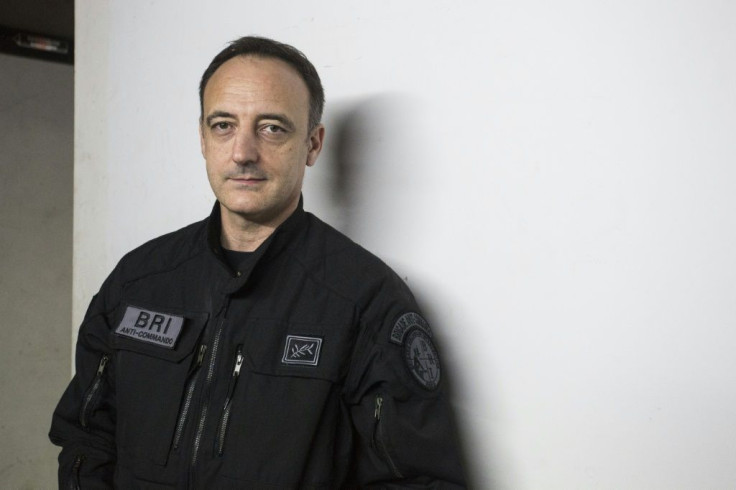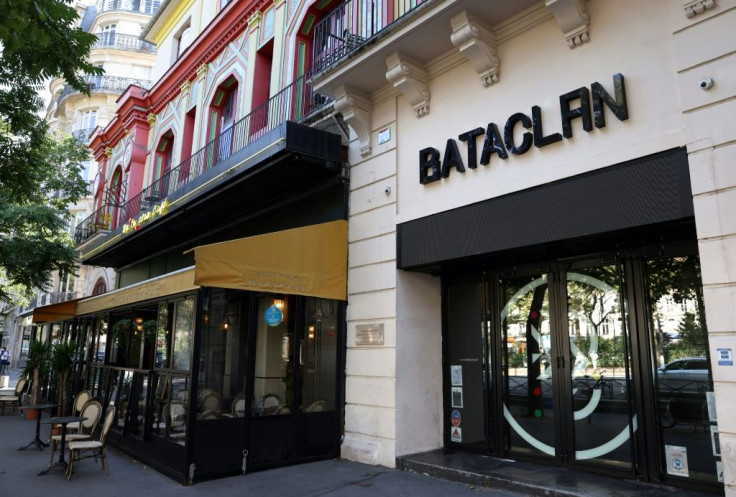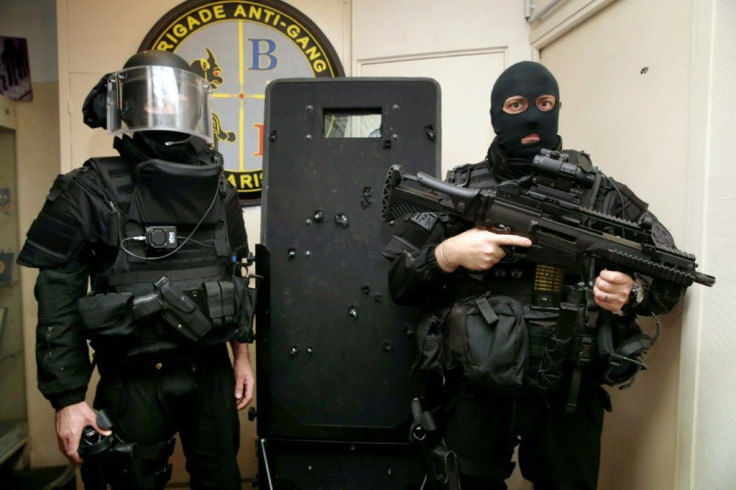Inside The Storming Of The Bataclan Concert Hall
The head of France's BRI commando police unit remembers every detail of the warm evening of November 13, 2015, before his life and those of his colleagues would be permanently marked by the nightmarish scenes of the Bataclan concert hall.
"I was at home. There was football on television," Christophe Molmy told AFP in a rare interview ahead of the start of the trial for the attacks. "I don't like football so we were watching something else as a family."
As head of the Research and Intervention Brigade (BRI), Molmy was used to tracking emergencies and operations from home, but at 9:47 pm he remembers receiving a message from a journalist that shots had been fired at people in restaurants and bars.
From that moment on, confusing information flowed as three groups of gunmen with suicide belts spread terror through Paris, attacking the national football stadium, restaurants, and finally the packed Bataclan concert hall.

"That night, in the space of 33 minutes, Paris was the victim of eight attacks. Eight attacks!" Molmy said. "They were so spread out that we didn't know where to go exactly."
They received instructions to head to the Bataclan where men armed with Kalashnikovs had been seen rushing in and a hostage crisis was under way.
In the vicinity of the venue, people were running for safety. The injured were collapsed on the pavement, or crying for help.

Molmy stopped to speak to a policeman and his driver who had followed the gunmen into the premises with only handguns and light bullet-proof vests for protection.
They had shot and injured one of them, who blew himself up, before retreating under a hail of gunfire.
Molmy headed into the hall himself, packed with thousands of fans of that night's band, Eagles of Death Metal.
The strong stage lighting illuminated hundreds of tangled bodies on the floor. The silence was total.
"I didn't understand how they'd managed to kill so many people in such a short space of time," he remembered.

The BRI officers had no idea where the killers were.
"We didn't know who was in the room, how many terrorists there were, if they're hiding in a dark corner to shoot at us, if they'd rigged up the room with explosives," he explained.
Surveying the scene, Molmy realised that among the casualties were people who were either playing dead, or in shock.

"The Kalashnikov is a terrible weapon that does awful things to a human body," Molmy remembered.
Having swept the ground floor, they took the decision to explore the upper levels at around 11:00 pm, less than an hour after they arrived on the scene.
"We found some injured people, there were others who had piled into the toilets, or were hiding in the ceiling cavities or cupboards... at least a hundred," Molmy said.
Fifteen minutes later, they came to a blocked door in front of a narrow passageway.
A hostage screamed at them not to enter, saying they were "being held by two terrorists with Kalashnikovs and suicide belts".

She gave her mobile phone number.
A specialist negotiator was assigned to call.
"From the first call... we realised quickly that they weren't going to surrender," Molmy said.
There was no option to release the hostages "other than with an assault".
Some of the 12 hostages had been forced to position themselves against the windows to prevent police snipers getting a sight of the gunmen.
"Going through a door, into a corridor to attack terrorists hiding behind hostages... on paper, it's the worst of all scenarios," Molmy said.
Despite the dangers, the decision was taken to go ahead.
The BRI commandoes readied their Ramses protection shield, a thick black door-shaped Kevlar cover with a small window enabling security forces to advance while under fire.
Five more calls with the gunmen took place. The BRI team was told to stand down every time they were about to begin.
At 00:18, they called again, but this time Molmy gave the green light to his men to burst through the door.
"There was an immediate exchange of fire," Molmy said. "We fired very, very few rounds, but they emptied a whole Kalashnikov magazine into the shield."
Twenty-seven bullets were later found in its surface.
As the attackers pulled the trigger, the BRI column inched forward and the hostages crawled along the floor, under the shield and toward safety.
The column made steady progress until it reached a small step, which tipped the the 80-kilogram (176-pound) shield forward, leading it to fall under its own weight "like a drawbridge".
The first commando, no longer protected, drew his weapon and opened fire.
He injured one of the terrorists, who ran away before blowing himself up in the passageway with his suicide belt.
The column continued, going around a corner, where the second gunman was sat down, his back against the wall, waiting to detonate.
A BRI marksman shot him dead before he could activate the belt.
The BRI team used seven grenades and 11 rounds. Not one of the 12 hostages was among the 90 people who lost their lives in the Bataclan that night.
"It was surgical," Molmy said.
© Copyright AFP {{Year}}. All rights reserved.





















